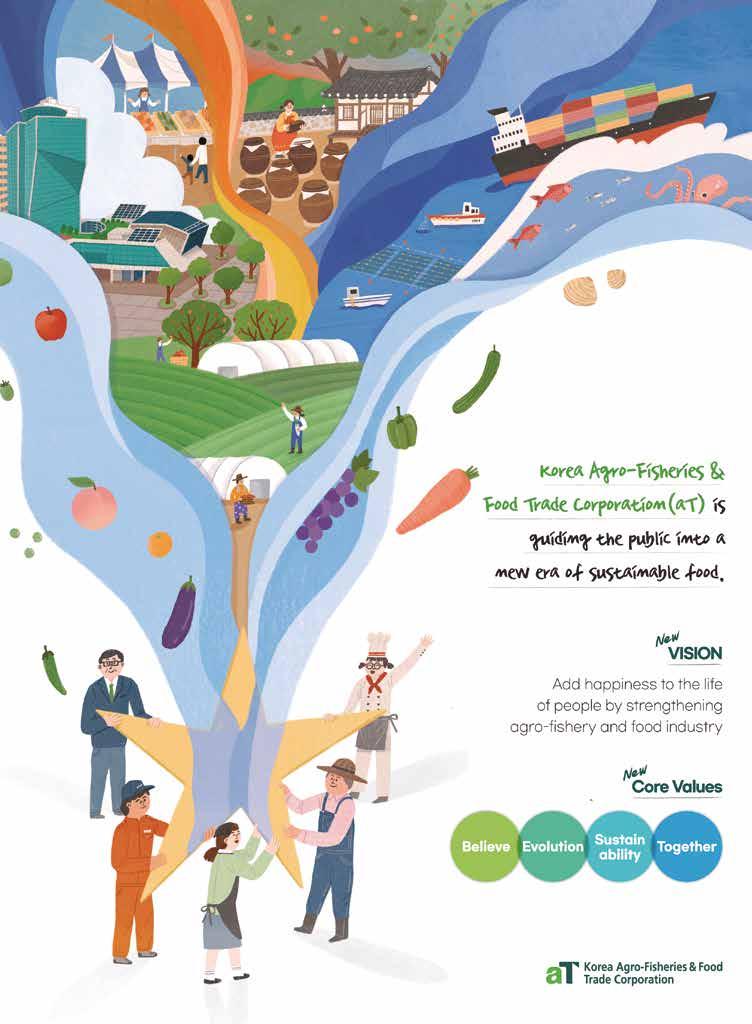








%
of annual carbon emissions come from the food sector!
Let’s work together to minimize carbon emissions at all stages of food system
Increase production of Eco-friendly agricultural and marine products
Reduce distribution steps and use green fuels
Prepare only the necessary amount of food and consume it without any leftover
Minimize waste in processing and handling
As a response to climate change, we support the declaration of a Global Low Carbon Diet Day to reduce carbon emissions from food, which accounts for 31% of global greenhouse gas emissions, and the formation of the Low Carbon Diet Forum, a movement for action that promises a healthy humanity, a healthy planet, and a sustainable future.
One. We recognize that a low carbon diet is essential for a healthy global environment, which is directly related to the future of humanity.
One. We will solidarise and cooperate in all projects and activities promoted by the international community to achieve food carbon neutrality.
One. We will work together to minimize carbon emissions at all stages of food production and consumption.
One. We will designate every Wednesday as Low Carbon Diet Day to promote and practice the importance of food carbon neutrality.
As a public institution in charge of food industry, aT has established a network of cooperation with more than 600 companies, institutions, and organizations at home and abroad to spread low-carbon diet movement.
Please scan the QR below, and show your support



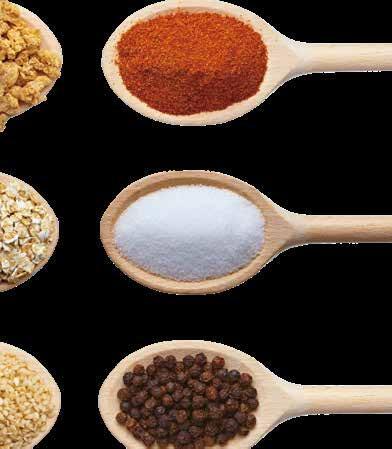










This issue spotlights Korea's dynamic tea industry, highlighting its remarkable growth and innovation. From traditional green teas to fruit syrup-based liquid teas, the tea market is thriving with liquid teas driven by their convenience and versatility. Meanwhile, the growing demand for infused teas reflects a shift toward premiumization. The Cover Story features Cholocwon, a leader in liquid tea production. In the Farmtastic section, we visited Gamsa Farm in Changwon, South Gyeongsang Province, the world's largest persimmon producer. The New Items section introduces Jungwondang's Cheongmyeongju, a traditional liquor made with techniques passed down through six generations. The Food Tech section highlights RE:HARVEST, Korea's first upcycling food company, while E-Commerce explores Korean condiments. The Photo Eassy takes you to Hanok-style cafes that blend tradition with modern coffee culture. Finally, the Trends & Products section showcases innovations in dairy products, and the Recipe section introduces a warming jujube-ginger tea.
Founded in August, 1995, Published monthly by the
227, Munhwa-ro, Naju City, South Jeolla Province, Korea Tel: +82-61-931-0963 Fax: +82-61-804-4521
Government Registration Number: Ra-7210
Dated April 26, 1995
Copyright by the aT (Korea Agro-Fisheries & Food Trade Corp.) All rights reserved.
CEO Hong Moon-pyo
EXECUTIVE VICE PRESIDENT Kwon O-yub (Food Industry & Trade Division)
EDITOR Hwang Doyoun
CHEIF REPORTER Kim Eil Chul
COORDINATOR Yoon Hyun-joo
CREATIVE DIRECTOR Chang Soobum
PHOTOGRAPHY DIRECTOR Hwang Donggun
TRANSLATORS Kivit Adrianus (ENGLISH), Shin Nakajima (JAPANESE), Bart Wu (CHINESE)
EDITORIAL BOARD
BEIJING John Dae-young (redsun@at.or.kr) 070-4617-5090
SHANGHAI Lee Jong-geun (jglee@at.or.kr) 070-7077-6197
DALIAN Lee Jeong-seok (rhee@at.or.kr) 070-4617-3278
HONGKONG Kim Hyun-hoo (max@at.or.kr) 070-4617-2696
QINGDAO Lee Sun-Woo (bird@at.or.kr) +86-532-5566-8873
QINGDAO aT LOGISTICS Han Seung-hee (shhan@at.or.kr) 070-7939-0863
HANOI Kim Kyoung-chul (yohang@at.or.kr) +84-24-6282-2987
HOCHIMIN Cho Sung-bae (chobae@at.or.kr) 070-8098-6514
BANGKOK Byun Kyung-yong (yong7619@at.or.kr) 070-4617-7227
JAKARTA Lee Seung-hoon (afmchoon@at.or.kr) +62-21-2995-9094
KUALALUMPUR Jang Jung-ho (lastjang@at.or.kr) 070-5223-4901
TOKYO Yoon Sang-young (foodkorea@at.or.kr) +81-3-5367-6656
OSAKA Kwon Hyun-ju (hyunjukun@at.or.kr) 070-7000-4138
NEW YORK Shim Hwa-Sop (sirshim@at.or.kr) +1-212-889-2561
LA Kim Min-Ho (mhkim@at.or.kr) +1-562-809-8810
SAO PAULO Jung You-sun (usuni@at.or.kr) +55-11-3283-0089
DUBAI Jeon Yong-pil (pioneer@at.or.kr) +971-4339-2213
PARIS Nam Sang-hui (mudpearl@at.or.kr) +33-1-4108-6095
MOSCOW Shin Jae-hun (chekov@at.or.kr) 070-4617-3277
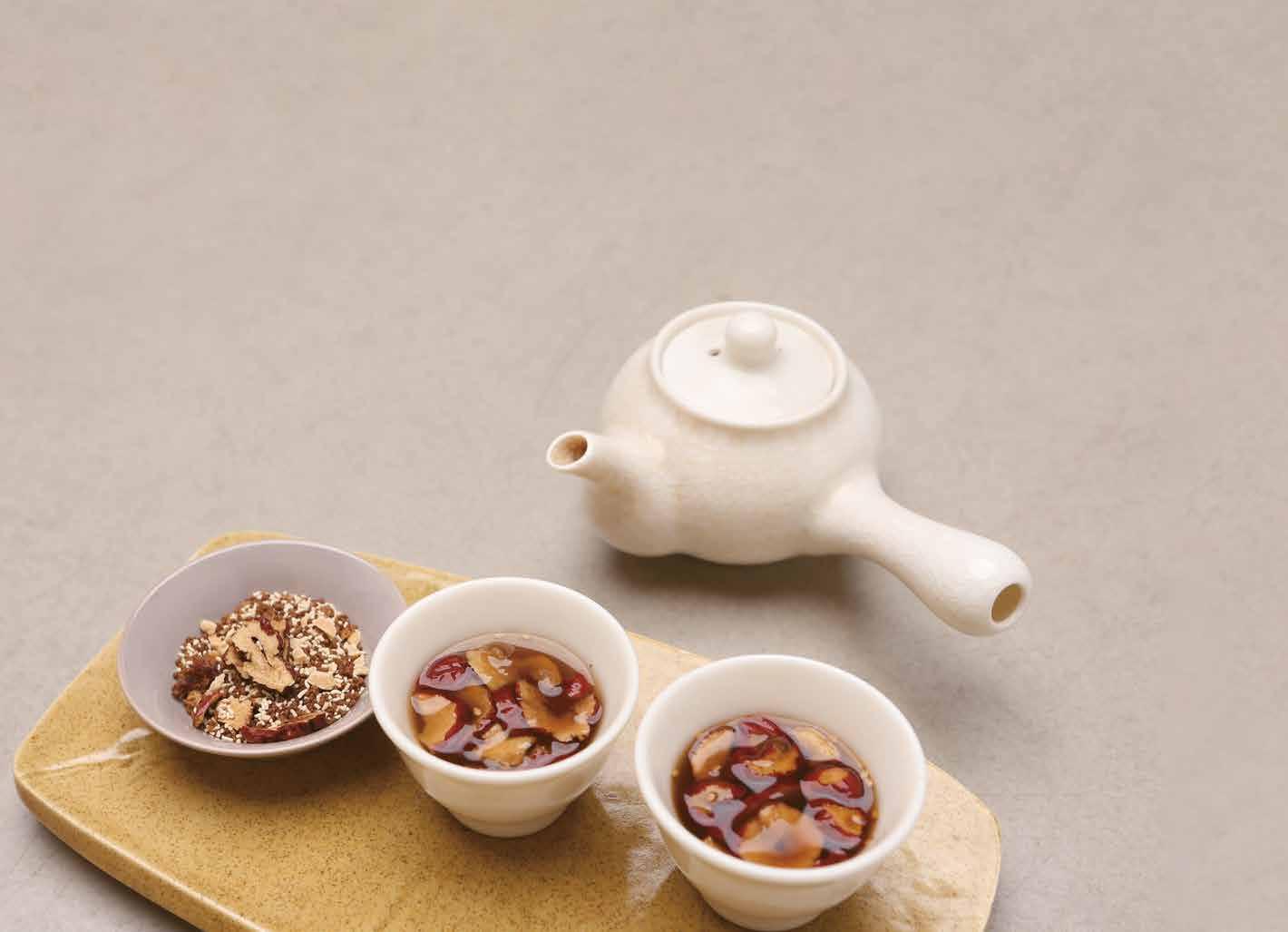
In Boseong County, Jeollanam-do, Lee Sun-hwa, the owner of Bugwang Green Tea, produces two tons of tea products annually from her 4,000-pyeong tea field. Situated among the region’s renowned tea fields, her spacious home doubles as a tea production facility and a cultural institution dedicated to teaching traditional tea techniques. Lee handpicks and processes the tea leaves, creating and selling her products directly. Bugwang Green Tea’s flagship product, “Wang-ui Noewoncha” (King’s Single Tea), is a traditional fermented tea believed to have been favored by Admiral Yi Sun-sin. This traditional tea, often called “King’s Single Tea” or “Noewon Tea” for its reputed mind-clearing effects, features a 6-centimeter diameter, a thickness of 0.6 centimeters, and weighs 60 grams, with leaves aged for over six

years. To prepare, a single tea disc is simmered with two liters of water over low heat for approximately 30 minutes. Traditional Korean teas such as this have primarily evolved and been preserved through local, family-based handcrafting methods.
Cholocwon Co. Ltd., led by CEO Song Jum-cheol, produces a range of liquid teas using a variety of native Korean fruits, including citron, jujube, ginger, Hallabong, cheonggyul, and strawberry. Their products are distributed domestically and exported internationally. Cholocwon’s liquid teas are rooted in traditional Korean culture, transforming the homemade practice of preparing and enjoying liquid teas into convenient commercial offerings. Consumers can create their own beverages by mixing the appropriate amount of liquid tea with water. Depending on the ingredients, these teas offer distinct health benefits. As health consciousness grows, so does the demand for high-quality, functionally diverse tea products, reflecting an increasing appetite for premium options and variety. The market shift towards tea as a healthy, functional beverage has attracted food specialists, pharmaceutical companies and large domestic corporations that previously focused on carbonated beverages. This has spurred significant innovation and expansion in the liquid tea sector, resulting in a wider range of offerings and improved safety standards. Mean -
while, specialty tea companies continue to lead the infusion and powdered tea markets. Infusion teas, which include tea bags and loose-leaf varieties, consist primarily of green tea, black tea, herbal teas and grain teas, and are available in packaging options such as bulk zipper bags for tea bags or loose-leaf use. Liquid teas include beverages such as green and black tea infusions, as well as fruit-based beverages such as citron and ginger teas. Powdered teas-also known as granulated teas-transform ingredients such as ginseng, green tea, and adlay into convenient powder forms.
Examples of infusion tea products include Damteo’s “Solomon’s Seal Tea,” Nokchawon’s “Organic Pure Green Tea,” Ssanggyesa’s “Persimmon Leaf Tea Made by Master Kim Dong-gon,” Danongwon’s “Cassia Seed Tea,” and Osulloc’s “Samda Honey Pear Tea.” In the liquid tea category, notable products include Namyang Dairy’s “17 Tea for a Lighter Body,” Kwangdong Pharmaceutical’s “Kwangdong Corn Silk Tea,” Woongjin Foods’ “Woongjin Cassia Seed Tea for Clear Vision,” Dongsuh Foods’ “Dongsuh Barley Tea,” and Lotte Chilsung Beverage’s “Added Barley Tea Plus.” Examples of powdered tea products are Damteo’s “Pumpkin Latte,” Good Life Research Lab’s “Kitchen Gourmet Double Harmony Powdered Tea,” Korea Ginseng Product Corporation’s “Hometown Gold Jujube Tea,” Kotsam Food’s “The Ssanghwa Tea,” Teazen’s “Teazen Organic Matcha,” YS’s “Dr. Kim O-gon’s Rich Ssanghwa Tea,” and Dongil F&T Co., Ltd.’s “Dongil Cornflake Cheonma Tea.” Tea has established itself as a cornerstone of Korea’s health industry. What began as a traditional cultural practice has evolved into a functional health food category, offering numerous beneficial properties while serving as a flavorful, aromatic substitute for drinking water. While ready-to-drink (RTD) liquid teas, primarily led by large companies, dominate the market, the production and distribution of infusion teas, which remain closely tied to Korea’s traditional tea culture, are also on the rise. Since 2017, the Korean tea market has experienced continuous growth, driven by the trends of industrialization, premiumization, and diversification.
変化する韓国のお茶市場と茶業
全羅南道宝城(ボソン)郡に位置するブグァン緑茶の イ・ソンファ代表は、約4千坪の茶畑で年間2トンの 茶製品を生産している。地域の特産品である茶の畑 を背景に立っている数百坪規模のイ代表の美しい家 は、緑茶の生産工場であり、同時に茶文化を伝播す る学校でもある。彼女は自ら茶畑で茶葉を摘み、下 処理をして製品を作り、直接販売する。ブグァン緑 茶を代表する商品は「王の脳原茶」で、これは李舜 臣(イ・スンシン)将軍が飲んだと伝えられているお茶 である。王が飲んだお茶ということから王の団茶と も呼ばれ、また頭がすっきりすることから脳原茶と も呼ばれている。直径6cm、厚さ0.6cm、重さ60g で、6年以上経った伝統発酵茶で、王の団茶1個に2リ ットルの水を注ぎ、弱火で30分程度煮出して飲む。こ
のような韓国の伝統茶製品は、ほとんどが産地を中 心に家庭内手工業の形で維持・発展してきた。
㈱チョロクウォンのソン・ジョムチョル(Song, Jum Cheol)代表は、韓国で採れる柚子や ナツメ、生姜、ハンラボン、みかん、
イチゴなどで液状茶を生産し、
国内販売はもちろん、海 外にも輸出してい
る。チョロクウ
ォンの色々 な液状

茶も、韓国の伝統文化からきている。長年人々が各 家庭でそれぞれ一、二種類の液状茶を作って日常 的に飲んできたものを製品化したのである。適量の 液状茶を水に溶かして飲むが、液状茶の原料によっ て、効能が異なる。健康への関心が高まるにつれ、こ のような明確な効能のある茶製品に対する消費者 のニーズもどんどん高級化、多様化している。 健康機能性飲料としてお茶に注目した 市場の変化は、食品専門企業や製 薬会社、炭酸飲料を生産・供 給してきた韓国国内の 大手企業が先を 競うように
お茶市場に参入するきっかけとなった。これらの企業はいち早 く液状茶市場をリードすべく動いた。液状茶の商品が多様化 し、安全性が強化された。その反面浸出タイプの茶と固形茶 分野にはお茶専門企業が積極的に参入している。浸出タイプ の茶はティーバッグや葉茶などが中心で、緑茶、紅茶、ハーブ 茶、穀物茶などがある。ティーバッグやティーポット用のチャ ック付き袋の簡易包装がある。液状茶には 緑茶や紅茶な どの浸出タイプの茶を液状にしたものと、柚子茶や生姜 茶などを加工した果物茶がある。固形茶は粉末茶で、高 麗人参茶、緑茶、ハトムギ茶のように原料を粉末状に加 工した製品である。
浸出タイプの茶には、ダムトの「ドゥングレ茶」、 ノクチャウォンの「有機農純粋緑茶」、サンゲ 名茶の「キム・ドンゴン名人が作った柿の 葉茶」、茶農園の「キョルミョンジャ 茶」、オソルロクの「サムダハニー梨 ティー」などがある。液体茶には、 南陽(ナムヤン)乳業の「体が軽 くなる時間17茶」と広東(グァン ドン)製薬の「広東トウモロコシ ひげ茶」、熊津(ウンジン)食品 の「 熊津 光明を見つけたキョルミ ョンジャ茶」、東西(ドンソ)食品の 「東西麦茶」、ロッテ七星(チルソン) 飲料の「トハダ麦茶プラス」などがある。
固形茶には、ダムトの「かぼちゃ山芋茶」、 良い生活研究所の「キッチングルメサンファ礼 賛固形茶」、高麗人参製品公社の「故郷ナツメ茶 ゴールド」、コッセム食品の「ザ・サンファ茶」、ティ ーゼンの「ティーゼン有機農抹茶」、ワイエスの「キム・ オゴン院長の濃いサンファ茶」、ドンイルF&D㈱の「ドンイ ルコーンフレーク天麻茶」などがある。
このように、今や韓国で茶は健康産業の重要な領域として確 固たる役割を担っている。伝統的な茶文化から、特定の機能 を強化する健康食品に、味と香りのある飲料水に代わる健康 機能飲料に発展した。様々なRTD液状茶商品が大手企業を中 心に市場をリードする一方、韓国の伝統的な茶文化により近 い、浸出タイプの茶の生産および出荷も増加している。2017 年以降、韓国のお茶市場は、生産量の持続的な増加と産業 化、高級化、多様化を同時に実現している。
Founded in December 2000, Cholocwon Co., Ltd. specializes in liquid tea products, starting with citron, jujube and ginger teas. Over time, the company expanded its product range to include teas made from native Korean fruits such as Hallabong, cheonggyul (young citrus), tangerine, plum, and quince. After its first export of USD 250,000 in 2011, Cholocwon increased its export revenue to USD 1.5 million in 2013, USD 1.6 million in 2014, and USD 2 million in 2015. Today, Cholocwon exports to many countries, including the United States, Taiwan, China, Japan, Vietnam, Singapore, Australia, France, and Italy. The company’s workforce has grown from 10 employees to nearly 30, with export revenue approaching USD 3 million.
In 2012, Cholocwon obtained ISO 22000 certification and increased its production capacity from 6,000 to 40,000 bottles per day. The company has also obtained FSSC 22000, HACCP and organic processing certifications. Cholocwon’s flagship products include Organic Plum Tea, Honey Jujube Tea, Honey Ginger Tea, Honey Citron Tea, and Honey Quince Tea. Through its online shopping platform, customers can purchase not only its core liquid teas, but also a wide range of powdered and infusible teas. The company offers over 20 types of liquid teas, nine types of powdered teas, two types of infusible teas, as well as extracts and jams. Cholocwon’s liquid teas are made with local ingredients such as citron, quince, jujube and ginger. The selection includes Honey Citron Tea, Honey Jujube Tea, Honey Quince Tea, Honey Ginger Tea, Premium Citron Tea, Honey Grapefruit Tea, Honey Lemon Tea, Jeju Cheonggyul Tea, Jeju Hallabong Tea, Cit-
ron and Tangerine Blend, Citron Passion Fruit, Hibiscus and Citron, Mint and Citron, Ginger and Lemon, Jeju Tangerine Tea, Honey Jujube Tea S, Grapefruit Black Tea, Orange Black Tea, and Premium Hallabong Tea. These honey- and fruit-infused teas can be enjoyed hot in winter or chilled in summer.
Cholocwon’s powdered tea lineup includes products such as Ginger Han Tea (15 packs), Goryeo Walnut Almond Adlay Tea (15 and 50 packs), Corn Flakes Sweet Pumpkin Tea (40 packs), Ginger Tea (15 packs), Corn Flake Cheonma Tea (40 and 90 packs), Ssanghwa Tea Gold (40 packs) and Ginger Tea Gold (40 packs). The infusible tea range includes Green Tea Jungjak (80g) and Green Tea Jakseol (80g), which blend healthy grains and nuts to introduce traditional tea flavors to modern consumers, in particular, those accustomed to coffee.
Cholocwon’s extracts include Omija Extract, Plum Extract, Premium Omija Extract, Organic Plum Extract, Oriental Raisin Red Ginseng Tea, Balloon Flower Tea, Ssanghwa Tea, Omija Extract S, and several more, totaling eight varieties. These extracts dissolve well in cold water, making them especially popular as refreshing summer drinks.
韓国の代表的な茶類企業、㈱チョロクウォン
農業会社法人㈱チョロクウォンは、2000年12月に設立 された液状茶の製造を専門とする企業である。設立当初 は柚子茶、ナツメ茶、生姜茶から始まり、ハンラボン茶、 青蜜柑茶、みかん茶、梅茶、かりん茶など、韓国産の果物 を活用した豊富なラインナップを揃えている。2011年に 25万ドル分を初輸出した後、2013年は150万ドル、2014 年は160万ドル、2015年は200万ドルの輸出を達成した。
米国、台湾、中国、日本、ベトナム、シンガポール、オース トラリア、フランス、イタリアなどに輸出している。従業員 は10人から30人以上に増え、輸出も300万ドル達成を目 前にしている。
2012年にISO22000認証を取得し、一日あたりの生産 量は6,000本の設備から40,000本の設備に拡充した。

州みかん茶、済州ハンラボン茶、柚子プラスみかん、柚 子パッションフルーツ、レモンパッションフルーツ、ハイ ビスカス&柚子、ミント&柚子、生姜&レモン、済州みか ん茶、はちみつナツメ茶S、グレープフルーツブラックテ ィー、オレンジブラックティー、プレミアムハンラボン茶 などがある。体に良い蜂蜜に新鮮な果肉を添加して作っ たこれらの液体茶は、冬には温かいお茶として、夏には 冷たい飲み物として飲むことができる。
FSSC22000認証をはじめ、HACCP認証、有機加工認証 なども取得している。代表的な商品にはオーガニック梅 茶、はちみつナツメ茶、はちみつ生姜茶、はちみつ柚子 茶、蜂蜜かりん茶などがある。チョロクウォンの自社販 売サイトで、同社の主力製品である液状茶はもちろん、 固形茶や浸出タイプの茶など、様々な茶類を購入するこ とができる。液状茶約20種 類と固形茶9種類、浸出 タイプの茶2種類、そ れからエキスやジャ ムを販売している。 同社の液体茶製品 は、韓国産原料を 使って作られてい る。柚子茶、かりん 茶、ナツメ茶、生姜 茶、はちみつ柚子 茶、はちみつナツ メ茶、はちみつか りん茶、はちみつ 生姜茶、プレミ アム柚子茶、 はちみつグレ ープフルーツ 茶、はちみつ レモン茶、済
固形茶には、生姜ハン茶15スティック入り、高麗クルミ アーモンドハトムギ茶15スティック入りと50スティック入 り、コンフレークかぼちゃ茶40スティック入り、イルプム 生姜茶15スティック入り、コンフレーク天麻茶40スティ ック入り、コンフレーク天麻茶90スティック入り、サンフ ァ茶ゴールド40スティック入り、生姜茶ゴールド40スティ ック入りなどがある。これらは体に良い穀物やナッツ類で 作った粉末タイプである。浸出タイプの茶には、緑茶中雀 80g、緑茶雀舌80gの2種類がある。コーヒーに慣れ親しん だ現代人に伝統茶の深い味わいを感じさせてくれる。 また、同社のエキスタイプの製品には、五味子エキス、梅 エキス、プレミアム五味子エキス、オーガニック梅エキス、 ケンポナシ紅参茶、桔梗茶、サンファ茶、五味子エキスSの 8つの種類がある。特にエキスタイプの製品は冷たい水に もよく溶けるので、夏の飲み物として人気がある。
GENERAL DIRECTOR: Park Jong-seok
E-MAIL: cholocwon@naver.com
WEBSITE: www.cholocwon.co.kr
TEL: +82-53-852-3000, +82-53-852-0600
ADDRESS: 45-15, Pyeongsa 1-gil, Jillyang-eup, Gyeongsansi, Gyeongsangbuk-do, Republic of Korea
Founded in 2000, Cholocwon Co., Ltd. specializes in liquid teas using domestic fruits like citron, quince, and ginger. With exports nearing USD 3 million, it ships to global markets. Certified for quality, its products include over 20 liquid teas, powdered teas, infusible teas, and extracts.
2000年に設立された㈱チョロクウォンは、柚子、カリン、生姜 などの国産果物を使用した液体茶を専門としています。輸出 額は300万米ドルに近づき、世界市場に展開しています。同社 は多くの品質認証を取得し、20種類以上の液体茶、粉末茶、 ティーバッグ茶、エキスを提供しています。
韓国のお茶市場の現状と消費者動向
Recent consumer surveys have shown that liquid tea is the most preferred type of tea in Korea, with 64.1% of consumers preferring it, followed by infusion tea at 23.6% and powdered tea at 12.4%. Men and those in their 20s show a stronger preference for liquid tea, while women and those in their 50s lean towards infusion and powdered teas. Specifically, men prefer liquid tea at a rate of 64.9%, infusion tea at 23.1%, and powdered tea at 11.9%, while women prefer these categories at 63.2%, 24.0%, and 12.8%, respectively. Across age groups, those in their 20s have the 韓国のお茶市場における消費者の好みは、液状 茶64.1%、浸出タイプの茶23.6%、固形茶12.4% の順である。男性と20代が液状茶をより好み、 女性と50代は浸出タイプの茶と固形茶をより好 むことが分かった。具体的には、男性の場合、 液状茶64.9%、浸出タイプの茶23.1%、固形茶 11.9%。女性の場合、液状茶63.2%、浸出タイ

highest preference for liquid tea (70%), while those in their 60s have the highest preference for powdered tea (22%).
When buying tea, consumers prioritize tea type (50.2%), followed by price (19.9%), brand (15.1%), tea origin (9.1%), packaging capacity (3.5%), expiration date (1.0%) and packaging condition (0.4%). Men are more likely to focus on price (22.4%), while women are more likely to focus on tea type (50.4%). Among different age groups, those in their 50s prioritize tea type (63.7%), while those in their 60s value tea origin (18.0%). People in their 40s place greater importance on brand (18.8%), while those in their 30s consider price (29.5%) most important. For those in their 20s, packaging capacity is a key factor (7.3%).
Over the past four years, the Korean tea market has experienced steady growth in market size and production scale. The liquid tea market expanded from KRW 600 billion in 2018 to KRW 720 billion in 2022. The infusion tea market grew from KRW 210 billion in 2018 to KRW 300 billion in 2022, while the powdered tea market grew from KRW 190 billion in 2018 to KRW 270 billion in 2022. This sustained growth reflects a broader trend of increasing consumer demand and diversification within the tea industry.
In terms of production, the Korean tea market has shown significant expansion across all categories.
Liquid tea production increased from KRW 540 billion in 2018 to KRW 640 billion in 2022. Infusion tea production increased from KRW 170 billion in 2018 to KRW 220 billion in 2022, while powdered tea production increased from KRW 160 billion in 2018 to KRW 210 billion in 2022. These increases highlight both increased consumer interest and industry growth in tea production.
Korea’s tea export volume has also shown consistent growth, rising from 24,074 tons valued at USD 77.89 million in 2018 to 26,430 tons valued at USD 103.13 million in 2021. The increase in both volume and value underscores the growing demand for Korean tea in international markets. Major export destinations include the United States, the Netherlands, Japan, Germany, and Vietnam, reflecting the growing global interest in Korean tea products.
プの茶24.0%、固形茶12.8%である。20代は、液状茶が 70.0%、浸出タイプの茶が21.8%、固形茶8.2%。30代 は液状茶65.7%、浸出タイプの茶24.8%、固形茶9.5%。 40代は液状茶65.3%、浸出タイプの茶24.8%、固形茶 9.9%。50代は液状茶60.8%、浸出タイプの茶26.5%、 固形茶12.7%。60代は、液状茶58.0%、浸出タイプの茶 20.0%、固形茶22.0%となっている。
お茶製品を購入する際に考慮する要素は、種類50.2%、 価格19.9%、ブランド15.1%、産地9.1%、容量3.5%、 賞味期限1.0%、包装状態0.4%となっている。男性は 価格(22.4%)、女性は茶の種類(50.4%)を相対的に重 要視すると回答している。年齢別では、50代は茶の種 類(63.7%)を、60代は産地(18.0%)を、40代はブランド (18.8%)をより重視しており、30代(29.5%)は価格を、20 代(7.3%)は容量をより重視していた。
韓国のお茶市場は、市場規模と生産規模ともに直近5年 間持続的な成長傾向を見せている。市場規模は、液状 茶の場合は2018年は約6千億ウォン、2019年は約6千5 百億ウォン、2020年は約6千4百億ウォン、2021年は約7 千億ウォン、2022年は約7千2百億ウォンに成長した。浸 出タイプの茶は、2018年は約2千百億ウォン、2019年は 約2千2百億ウォン、2020年は約2千2百億ウォン、2021 年は約2千9百億ウォン、2022年は約3千億ウォンで、固 形茶は、2018年は約1千9百億ウォン、2019年は約1千9 百億ウォン、2020年は1千9百億ウォン、2021年は約2千3 百億ウォン、2022年は約2千7百億ウォンに成長した。 生産規模は、液状茶は2018年に約5千4百億ウォン、 2019年は約5千8百億ウォン、2020年は約5千6百億ウォ ン、2021年は約5千7百億ウォン、2022年は約6千4百億 ウォンとなっている。浸出タイプの茶は2018年に約1千7 百億ウォン、2019年は約1千8百億ウォン、2020年は約1 千7百億ウォン、2021年は1千7百億ウォン、2022年は約 2千2百億ウォンに成長した。固形茶は2018年に約1千6 百億ウォン、2019年は約1千5百億ウォン、2020年は約1 千4百億ウォン、2021年は約1千8百億ウォン、2022年は 約2千百億ウォンに成長した。
輸出状況は、2018年は24,074トンで7,789万ドル、2019 年は21,573トンで7,537万ドル、2020年は33,107トンで 8,629万ドル、2021年は26,430トンで1億313万ドル分を 輸出した。主な輸出先は米国、オランダ、日本、ドイツ、 ベトナムなどである。

Gamsa Farm is located at an altitude of 1,300 meters. It benefits from excellent drainage and significant temperature variations between day and night. This environment helps the farm produce persimmons with a firm texture, crisp flavor, high sweetness and vibrant color. However, farming on steep mountain slopes presents challenges. The farm avoids herbicides entirely; grass is mowed by hand and turned into compost to enrich the soil. Fertilizers made from beneficial microorganisms, seaweed powder, and fish meal are fermented to nourish the soil, allowing roots to decompose organically and enrich the soil as the grass decomposes in the fall, facilitating aeration. This practice encourages thriving worm populations, which create natural airways and increase microbial activity, resulting in healthier soil. The limited use of chemical fertilizers results in “DanGam4U” persimmons.
The persimmon trees at Gamsa Farm produce approximately 90% male flowers and 10% female flowers. The abundant pollen from the male flowers helps fertilize the female flowers, increasing fruit production. Even under adverse weather conditions, Gamsa Farm experienced significantly less natural flower drop than non-pollinated persimmon orchards. This innovative cultivation method was introduced by Seo Min-ho, the head of Gamsa Farm.
The origin of the farm dates back to the mid-1950s under the leadership of Seo Gi-jo. After he passed away 25 years ago, the farm was left to his youngest son, Seo Min-ho. Persimmon trees can bear fruit for more than a century, and the average age of the 800 trees at Gamsa Farm is about 40 years. Of these, 300 trees were planted by Seo Gi-jo, while 500 were added by Seo Min-ho in 1986, shortly after completing his military service.
This year, Gamsa Farm faced challenges due to high temperatures in August and September, which stunted persimmon growth and delayed ripening by 10 to 15 days compared to last year. The first harvest attempt on October 25 was postponed due to unripe fruit, and the full harvest began on November 17. Harvesting typically takes 15 to 20 days. About 4,000 crates of persimmons, each weighing 10 kilograms, are collected from the farm’s 7,000 pyeong (about 23,000 square meters) of land. The persimmons are stored in the farm’s cold storage facilities from mid-December to the end of February. Gamsa Farm’s single variety “Buyu” persimmons can remain on the tree for about one month after ripening and can be stored for up to five months. This year’s expected yield of 40 tons will be distributed to Hyundai Department Store Apgujeong in Seoul and the well-known Korean vegetable retail chain “Chonggakne Vegetable Store”, which has been a major outlet for the farm for the past decade. “DanGam4U” persimmons are recognized as Korea’s finest, ensuring consistent demand. A 10-kilogram box of premium persimmons sells for KRW 60,000. Including smaller fruits, the average price per box is around KRW 30,000, resulting in an expected revenue of KRW 120 million.
Seo Min-ho was named one of Korea’s Top 100 Star Farmers by the National Quality Management Institute for his exemplary farming practices and superior yields. His methods and results distinguish him as a leader in agriculture. Gamsa Farm’s persimmons won top honors in a national produce competition organized by the Quality Management Institute. The Rural Development Administration also recognized its fruit as one of the best in the “Top Fruit” program.

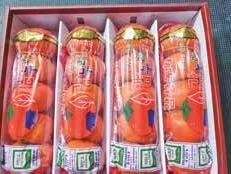
生产韩国名品水果“甜柿FORYOU”的“Gamsa Farm”
Gamsa Farm位于海拔1300米的高地上,因此排水良好,昼 夜温差大。在这样的环境中种植的甜柿肉质好,口感爽脆, 甜度高,色泽鲜亮。
不过,由于果园位于陡峭的山坡上,工 作起来也尤其辛苦。农场不使用除草剂,而是将杂草割下 来打碎后,当作肥料混入土壤中。农场主要使用有效微生 物、海藻粉和鱼粉等发酵制成的有机肥。杂草的根深入土 壤,到秋天枯死后在氧气的作用下变成土壤,使土质变得 松软。蚯蚓在土中生长,可促进土壤的通气性,使微生物更
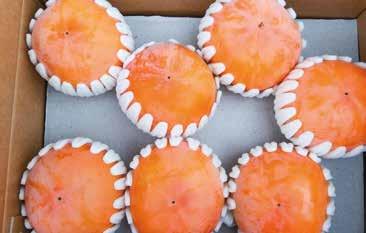

加丰富,土壤更加健康。农场几乎不使用化学肥料。“甜柿 FORYOU”就是这样诞生的。
在种植“甜柿FORYOU”时使用授粉树提高了坐果率。授粉 树开花时90%为雄花,10%为雌花。不结果的雄花可以大 面积传播花粉,将其传播到结果的雌花上,从而提高繁殖 能力。当气候恶劣时,通常会造成大面积落花,但比起没有 种植授粉树的柿子园,落花现象要少得多。徐民镐代表发现 这个现象后,将其应用于“Gamsa Farm”的种植方法中。
“Gamsa Farm”是在20世纪50年代中期由徐基祚代表创 立的。他于25年前去世后,由他的小儿子徐民镐代表继承 了农场。甜柿树树龄超过100年依然能结果。Gamsa Farm 的800棵柿子树平均树龄约为40年。其中,最高树龄达60 年左右,是徐基祚代表生前栽种的,当时一共种植了3百 棵。其余5百棵是1986年左右徐民镐代表退伍后和父亲一 起种植的。
“Gamsa Farm”的柿子在今年7月之前长势良好,但8月 ~9月的高温天气使得柿子生长停滞。因此,今年的成熟
期比去年晚了10~15天。10月25日按原定计划采收时发
现果实尚未成熟,因此暂停了采收,直到11月17日才正式
开始采收。采收期通常为15~20天,预计在7000坪左右的农
场可采收四千箱(一箱10公斤)柿子。采收的柿子将储存在 农场的低温储藏库,储藏时间为今年12月中旬到明年2月底。
“Gamsa Farm”的单一品种“Buyu”柿子在仓库中可以储存 约5个月,成熟后即便放置在树上一个月左右也不会变质。
今年采收的40吨甜柿将供货给首尔的“现代百货商店狎鸥 亭店”和韩国著名的蔬菜零售连锁店“Chonggakne蔬菜 店”。“Chonggakne蔬菜店”是近十年来农场的主要销售 渠道。Gamsa Farm的“甜柿FORYOU”产品在韩国属于最 高品质,因此销售渠道十分稳定。一箱优质柿子(10公斤) 的售价为6万韩元,因也有个头较小的柿子,所以一箱柿子 (10公斤)的平均售价为3万韩元左右,预计总收入可达 1.2亿韩元。
Gamsa Farm是韩国百大明星农场之一,徐民镐代表被韩 国政府机构品质管理院评选为“韩国杰出农民100人”之 一。他凭借出色的种植方法和成果被评为先进农民。在由 品质管理院举办的名品大赛上,Gamsa Farm的甜柿被评 为韩国第一甜柿。此外,还被农村振兴厅评选为最佳水果 “Top Fruit”。
CEO : Seo Min-ho
TEL/FAX: +82-55-281-2031 / +82-55-299-9055
E-MAIL: g2031@naver.com
ADDRESS: 69-9, Masan-gil, Buk-myeon, Uichang-gu, Changwon-si, Gyeongsangnam-do, Republic of Korea
Gamsa Farm, at 1,300m elevation, produces premium “DanGam4U” persimmons using eco-friendly methods, avoiding herbicides and emphasizing natural composting. With 800 trees, the farm yields 40 tons annually, sold to top retailers. Challenges include weather delays, but innovative practices ensure quality. Owner Seo Min-ho, named a Top 100 Star Farmer, leads with sustainable excellence.
Gamsa Farm位于海拔1300米,依靠优良的排水条件和显著的 昼夜温差,生产出优质的“甜柿FORYOU”柿子。农场坚持环保 种植,完全避免使用除草剂,通过天然堆肥改良土壤。拥有800 棵柿子树的农场每年产量达40吨,主要供应高端零售商。尽管 面临天气延误等挑战,创新的耕作方法保证了柿子的高品质。 现任负责人徐敏浩被评为“韩国百大明星农民”,以其可持续的 卓越种植实践引领行业发展。
dedicated to food upcycling, awards its certification mark to products and ingredients that contain at least 10% upcycled content by weight. By purchasing UFA-certified products, consumers help mitigate the climate crisis and reduce food waste.




Food manufacturing processes often leave a significant amount of byproducts. In Korea, approximately 70% of raw materials used in the food and beverage industry are discarded, contributing to significant environmental costs. RE:HARVEST, Korea's first food upcycling company, transforms these discarded by products into valuable food resources.
RE:HARVEST is the first food upcycling company in Korea and Asia certified by Upcycled Food Asso ciation (UFA). The UFA, the only global organization

of RE:NERGY powder reduces 11 kg of carbon emissions and saves 3.7 tons of water. This innovative approach rescues nutrient-rich byproducts that might otherwise be used only as compost or animal feed due to technological limitations in food processing. RE:HARVEST emphasizes the importance of the upcycling process to preserve the nutritional value and quality of the raw materials. Its HACCP certified facility incorporates advanced semiconductor technology to achieve these goals. The process involves ultraviolet and far-infrared pre-treatment, sterilization with special cleaning solutions, and nutrient content monitoring during drying using feedback control systems. After cleaning and drying, the byproducts are finely ground and impurities are removed, completing the transformation into upcycled raw materials. This proprietary process has resulted in four patent applications and Green Technology certification.
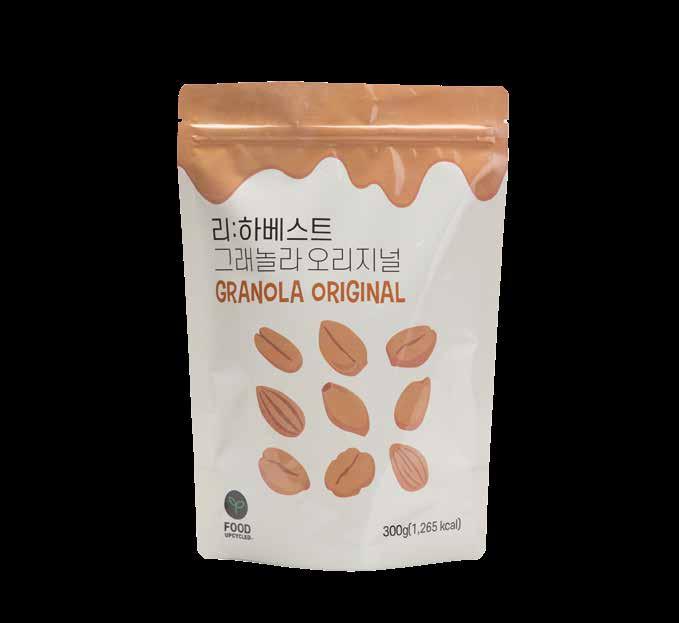
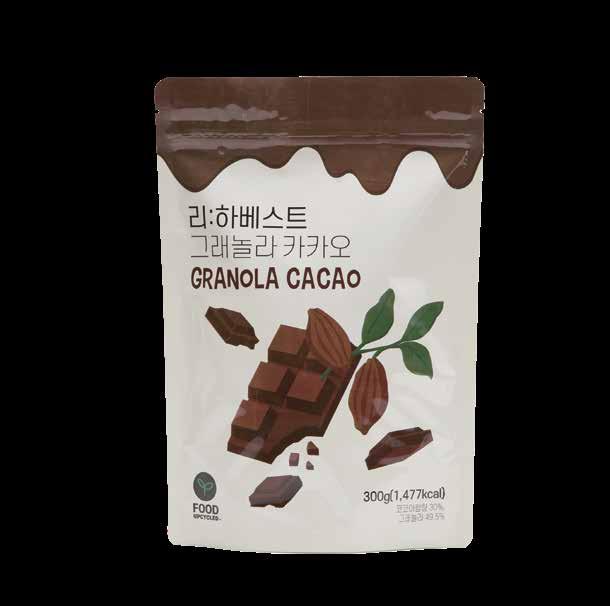
RE:HARVEST produces a variety of "healthy pleasure" products using Re:NERGY powder, such as energy bars, granola and shakes. The company partners with well-known brands such as OB Beer (Re:nergy Bars and Crackers), Tous les Jours (Kind Bread), Bronx Pizza (pizza dough) and The Bread Blue (bakery products). Through these partnerships, the company has expanded its product line to include protein balls, crispy rolls, and traditional snacks
To further diversify its byproduct sources, RE:HARVEST operates an inhouse research and development center. Current research is focused on upcycling tofu whey, soybean curds, vegetable waste, grain, and husks from the threshing process. The company also plans to expand into alternative dairy products. By developing new innovations, RE:HARVEST aims to unlock the full potential of food upcycling. Globally, RE:HARVEST is working with Indonesia's largest beer company and plans to expand into Vietnam, Canada and other markets. This demonstrates the scalability and impact of food upcycling as a sustainable
韓国初のフードアップサイクル企業「リハーベスト」
食品製造企業は、様々な食品の製造過程で「副産物」 を発生させる。韓国の場合、食品や飲料製造産業におい
て、食品原料の70%が廃棄されている。また、これらの 副産物は環境費用の増加を引き起こす。こうした廃棄さ れる食品の副産物を活用して、有用な食料にするフード アップサイクル分野で韓国初の企業が、リハーベストで ある。
<リハーベスト>は、韓国とアジアで初めて、Upcycled Food Associationによる「フードアップサイクル企業」
の認証を受けた。UFAは、食品廃棄の防止を目指すフー ドアップサイクル分野では唯一のグローバルな協会で あり、認証マークは、重量において10%以上アップサイ クル成分を含む食品と原材料に対して付与される。この 認証商品を購入することで消費者は、気候変動リスクの 解決や食品廃棄物の削減といった取り組みに参加する ことができる。
リハーベストのフードアップサイクルは、ビールやシッケ (発酵米のジュース)を製造した後に残る麦芽を搾った麦 の副産物(カス)を当日中に回収し、「洗浄・脱水・乾燥・
粉砕」の工程を経て、副産物を代替原料である「リナジ ー(RE:nergy)パウダー」に作り変える。リナジーパウダ ーは小麦粉に比べてカロリーが30%ほど低く、タンパク 質は2.4倍、食物繊維はなんと20倍も多い。また、リナ
ジーパウダー1Kg当たり11Kgの炭素排出量を、3.7トン の水使用量を削減することができる。
食品の製造過程で、技術不足により損失(Loss)したり、 堆肥や飼料としてしか使われていなかった栄養価の高 いこれらの副産物を使って、新しい製品を作る。食品の 副産物で原料を作るため、何よりも原料化の工程が重 要であり、栄養分と品質を維持することが肝心である。
これを実現するため、「HACCP(食品安全管理認証)」を 取得した自社工場の原料化過程に、半導体技術を取り 入れた。
紫外線と遠赤外線で原料を事前に処理した後、専用の 洗浄液で副産物を殺菌し、フィードバック制御方式で原 料の栄養状態を継続的にモニタリングしながら乾燥さ せていく。洗浄と乾燥の後は、できるだけ細かく粉砕し ながら異物を分離する粉砕工程を行い、粉砕が完了し たら小分けにする。これで原料化工程が終了する。自主 開発した原料化工程で4件の特許を出願し、グリーン技 術認証も取得した。
リハーベストは、健康と楽しみを同時に追求する様々な
「ヘルシープレジャー」製品を生産している。リナジー パウダーを原料に、リナジーバー、リナジーグラノーラ、 リナジーシェイクなどのスナック類やベーカリー類を製 造している。また、OBビールと協業してリナジーバーと

リナジークラッカーを、パン製造・販売チェーンのトゥ レジュールとは「やさしいパン食全粒粉食パン」を、ブ ロンズとはピザ生地を、ザ・ブレッドブルーとはパンなど を発売した。さらにプロテインボール、チョンドゥギ(駄 菓子の一種)、クリスピーロールなど、様々な製品を関連 企業との協業を通じて生産している。

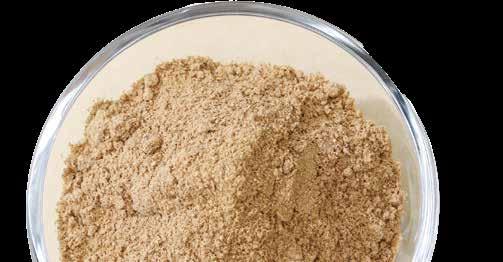
アップサイクルの原料となる「副産物」の種類を増やす ため、独自のR&D研究所を運営している。ビールかす、 麦芽、小麦粉のほか、豆腐、おから、様々な野菜のく ず、穀物および籾殻などを活用するために研究を進め ている。また、リナジーパウダーだけでなく、代替乳 製品へと事業領域の拡大を図っている。様々 な副産物をアップサイクルできるように、 発売する商品を増やしていく予定であ る。現在、インドネシア最大のビー ルメーカーと協業して海外で事業 を展開しており、他にもベトナム やカナダなどに広げていく計画
PARTNER : Jane Kee
TEL: +82-10-7227-0696
E-MAIL: kee@reharvest.net
WEBSITE: www.reharvest.net
ADDRESS: 171, Nonhyeon-ro, Seocho-gu, Seoul, Republic of Korea
RE:HARVEST is Korea’s first food upcycling company, transforming food by-products into sustainable resources like RE:NERGY powder. Certified by the Upcycled Food Association, its innovative processes reduce waste, conserve resources, and create eco-friendly products. Collaborating globally, RE:HARVEST leads the upcycling movement with a scalable, sustainable business model.
リハーベストは韓国初の食品アップサイクリング企業であり、食品 副産物を「RE:NERGYパウダー」のような持続可能な資源に変換 しています。アップサイクル食品協会(UFA)から認証を受けた同 社の革新的なプロセスは、廃棄物を削減し、資源を節約し、環境 に優しい製品を生み出します。グローバルに協力しながら、スケー ラブルで持続可能なビジネスモデルを通じてアップサイクリングの ムーブメントを牽引しています。
Takju requires refrigeration and stays fresh for up toproach rooted in traditional brewing techniques, which involve the manual preparation of rice porridge and rice cakes. This meticulous process results in limited production and subtle flavor variations, as Jungwondang's unique yeast is highly sensitive to temperature and humidity. To ensure consistent flavor, the distillery blends four to five clay pot batches. Each batch is brewed in a 200-liter pot, yielding approximately 100 liters, with 100 pots brewed each year. The brewing cycle for Cheongmyeongju is six months, while that
Cheongmyeongju contains 17% alcohol bykin-based "Hoho" and traditional "Boeunju," contain 10% alcohol by volume. "Hoho" features -
ually striking yellow drink favored by younger consumers. "Sunhee12, a fruit-infused variant, delivers apple and orange flavors reminiscent of orange juice. Boeunju, on the other hand, adheres strictly to traditional brewing methods, appealing to those who appreciate classic takju. Jungwondang's brews are known for their floral, fruity, and tropical notes, without bitterness or heaviness, and free of yeast odors. The distillery -
Cheongmyeongju is brewed with glutinous rice, while the Takju products such as Boeunju and Hoho are made with non-glutinous rice. Different rice preparations, including porridge, steamed rice cakes, and other traditional forms, contributerior rice preparations, distinguishing them fromveloped using traditional Jubangmun methods, and a patent application was filed for the "Grain Fermentation Yeast Manufacturing Method." This specialized yeast is expected to be

Jungwondang的法人代表Kim Young Sup的曾祖父曾
于1896年撰写《酒方文》一书,里面记录了当时清明酒 的酒曲和酒的酿造方法。金代表的父亲在1980年初按 照这本《酒方文》的记载,将浊酒熟成后再过滤,成功酿 造了清明酒。因此,“Jungwondang”的历史可以追溯到 1896年。清明酒于1993年6月被指定为忠清北道第二号 非物质文化遗产。2022年,Jungwondang的清明酒获 得了韩国总统奖,而其浊酒(报恩酒)则获得了最优秀奖。
“Jungwondang”生产的烧酒系列“清明24”、“清明40”、 “清明52”也将于今年12月上市。
清明酒于1994年11月上市,第一年的销售额便达到了1.5 亿韩元。2022年浊酒上市。同年,首次向中国和新加坡出 口,出口额分别为700万韩元和300万韩元。今年的出口 额预计能达到3000万韩元。过去五年的销售额分别为:
2019年和2020年各4亿韩元,2021年和2022年各6亿韩 元,2023年7亿韩元。
销售额的90%来自清明酒,浊酒占 酿造非物质文化遗产清明酒的 Jungwondang
10%。清明酒可常温保存,保质期生酒为1年,杀菌的清明 酒为2年。浊酒则需冷藏,保质期为3个月。
“Jungwondang”的酒是手工酿造的。在酿造过程中,从 熬粥到做年糕的每一个环节都坚持使用传统的手工酿造 法 。因此,生产量不大,即使是同一款酒,味道也会有所不 同。“ Jungwondang”使用自己制作的酒曲来酿酒,而酒 曲的味道也会因温度和湿度的变化而有所不同。酒曲中 的菌种和糖化力也不尽相同,这使得酒的口感也有所不 同。所以会将4~5个酒坛里的酒混合在一起,这样酒的味 道就会变得相似。在200升的坛子里酿酒,最终可产出约 100升的成品酒,相当于一半。Jungwondang每年会用 100个坛子来酿酒。Jungwondang的清明酒酿酒周期为 6个月,浊酒的酿酒周期为4个月。
“清明酒”的酒精度数为17%,浊酒为10%。浊酒有两款, 分别是使用甜南瓜制作的“HoHo”和“报恩酒”。在酿好 的浊酒中,加入蒸熟并打碎的甜南瓜,便成了“HoHo” 酒,甜南瓜的比重大约占20%。因此,酒的颜色呈黄色,
十分美丽,吸引了很多消费者购买。用同样的方法生产 的“Sunny12”则加入了苹果和橙子,有点像橙汁。“报
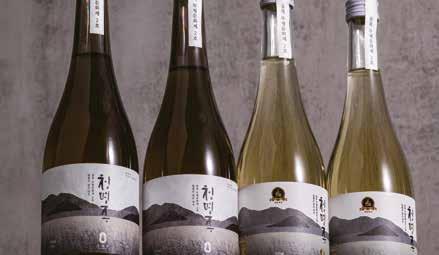

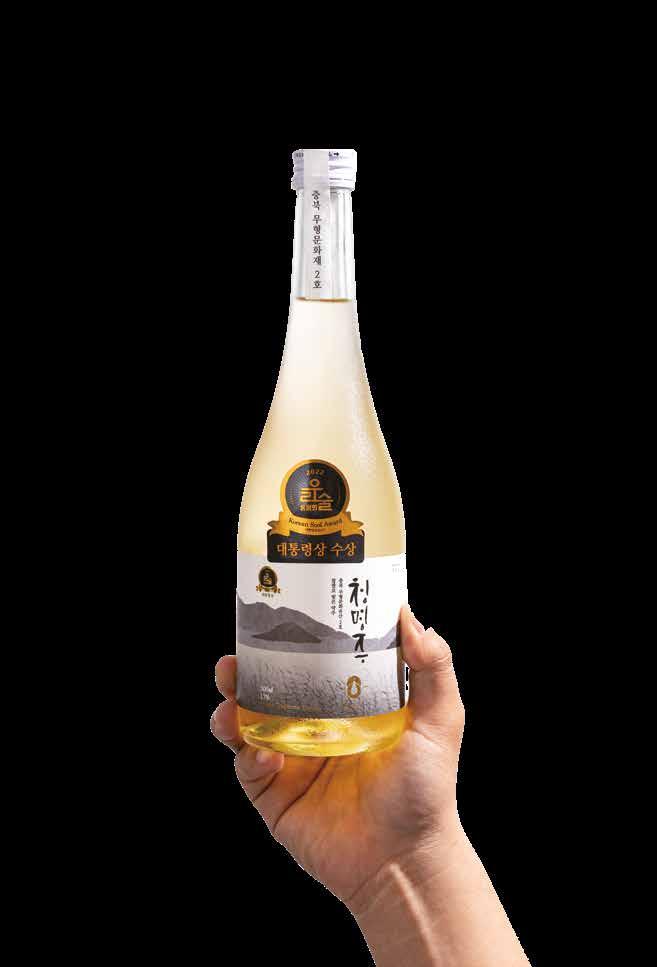
恩酒”是以传统方式酿造的浊 酒。
由于对添加物的喜好不 同,年轻人更喜欢“HoHo”。 Jungwondang的酒散发着花 香、果香和热带水果的香气。 香味宜人,没有苦味,口感柔 和而不涩,且没有酒曲的气味。
“Jungwondang”在酿酒时, 绝对不会添加水和任何添加剂。
“清明酒”在制作时使用的是糯米,而浊酒“报恩酒”和 “HoHo”使用的是大米。在酿造传统酒时,酒尖可以通 过多种方式进行处理,如熬粥、年糕、蒸饭、蒸糕、打糕等, 不同的处理方法会影响酒的味道。Jungwondang的酒 和日本清酒的不同点就是酒尖的处理方式和酒曲。酒的 味道随着酒曲而不同。“Jungwondang”从去年开始使 用重新制作的酒曲,采用了《酒方文》中的制作方法。今 年夏天,《使用谷物发酵酒制作酒曲的方法》申请了专利。 Jungwondang从去年开始将清明酒加入酒曲中生产“清 明酒专用酒曲”。这种酒曲预计两年后会上市。
Founded on traditions dating back to 1896, Jungwondang crafts premium Korean rice wines like cheongmyeongju and takju using patented yeast and artisanal methods. Renowned for its floral and fruit-forward notes, its products have earned accolades, including the Presidential Award. With expanding global exports, Jungwondang preserves Korean heritage while innovating for modern palates.
创立于1896年传统酿造技艺之上,Jungwondang公司利用专利 酵母与手工工艺,酿造高品质韩国米酒如清明酒和浊酒。其产品 以花香和果香著称,并获总统奖等殊荣。在全球出口不断扩大的 同时,Jungwondang在传承韩国文化遗产的同时满足现代消费
Kim Young-sup
+82-43-842-5005, +82-43-842-5335 ktwine3496@naver.com www.청명주.com. 112-10, Cheonggeum-ro, Jungangtap-myeon, Chungju-si, Chungcheongbuk-do, Republic of Korea


Dairy products in Korea are classified into three main categories: cheese, butter, and fermented milk. While domestic raw milk consumption has declined, overall demand for dairy products continues to grow. As of 2021, Korea’s dairy market revenue reached approximately 3.6 trillion won, with fermented milk leading in consumption, followed by cheese and butter. The prolonged impact of the global pandemic has heightened the focus on immunity and wellness, fueling a “healthy pleasure” trend that emphasizes enjoyable, health-oriented products—a shift evident in the rising popularity of innovative dairy items. Fermented milk is processed milk made by fermenting milk with lactic acid bacteria and other ingredients. The fermented milk market has experienced considerable growth driven by increased consumer interest in health, coupled with various product launches targeting this demand. Probiotic-rich products that support digestive health are particularly popular, with new offerings reducing sugar content while enhancing nutritional value. Notable products include hy’s PRONIQ, Korea’s first spoonable probiotic yogurt; Seoul Dairy Coop’s Duoan, which combines red ginseng and probiotics; and Namyang Dairy’s Bulgaris Fit, formulated with patented probiotics that support fat reduction. Cheese is produced by adding lactic acid bacteria, rennet, and organic acids to milk or dairy
products. The cheese market in Korea has shown an average annual growth rate of 5.4% since 2018. This growth has been fueled by health-conscious trends, evolving tastes towards Western flavors, and expanded cheese distribution. There has been a notable rise in demand for cheese as both a cooking ingredient and a snack, leading to the development of a diverse range of new cheese products. Key offerings include Sangha Cheese’s “Ricotta Cheese,” Imsil Cheese Cooperative’s “Grilling Cheese,” Seoul Dairy Coop’s “Farm Outing String Cheese,” and Binggrae’s “High-Protein Slice Cheese.” Butter, which is made by separating and fermenting milk fat, has also gained traction as more consumers embrace home baking and cooking, driving demand for premium butter products. In 2021, Korea’s butter market was valued at 42.2 billion won, with forecasts predicting growth to 35.9 billion won by 2026. Leading products include Seoul Dairy Coop’s Morning Butter and Pasteur’s Healthy Fermented Butter. Imported butter is also becoming more popular, expanding the premium market. Notable imports include “Isigny AOP Butter” from France’s Isigny region and “La Conviette Butter,” which has become a French luxury butter. In light of these trends, the Korean dairy market is poised for continued expansion, with a broader selection of products that focus on both taste and health.





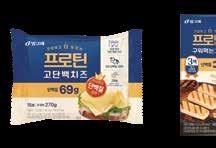
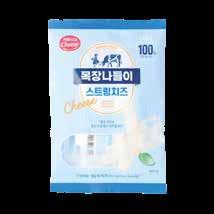

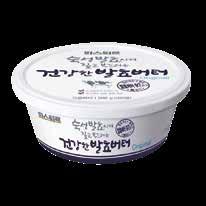
韓国の乳製品は大きくチーズ、バター、発酵乳に分けるこ とができる。全体的に生乳の国内消費量は減少している ものの、乳製品の消費は持続的に成長している。2021年 の国内乳製品の売上高は約3兆605億ウォンで、このうち 発酵乳の消費量が最も多く、次いでチーズ、バターの順で あった。新型コロナウィルス感染症のパンデミックが長期 化する中で免疫力や健康管理の重要性が高まるにつれ て、楽しく健康を管理するという意味の「ヘルシープレジャ ー」がトレンドになり、乳製品でもこれを反映した商品が 人気を集めている。
発酵乳とは、乳酸菌で発酵させてから食品または食品添 加物を加えた加工品である。健康に対する消費者の関心 の高まりと、これを狙った様々な商品の発売が発酵乳市 場の成長に影響を及ぼした。特に、プロバイオティクスを 含んでいて腸の健康に役立つ商品が人気を集めており、 糖分を減らすか、または健康に役立つ栄養素を含む新商 品も発売されている。主な商品には、韓国初のスプーンで すくって食べるタイプのプロバイオティクス発酵乳である 韓国ヤクルトの「プロニック」、紅参とプロバイオティクス を組み合わせたソウル牛乳協同組合の「デュオアン」、体 脂肪の減少に役立つ特許取得乳酸菌を含むナムヤン(南 陽)乳業の「ブルガリスFit」などがある。
このようなトレンドに後押しされ、韓国の乳製品市場は今 後、健康と味を考えた様々な商品が発売され、市場規模 のさらなる拡大が予想される。
チーズとは、生乳または乳加工品に乳酸菌、凝乳酵素、 有機酸などを加えて製造・加工したものを指す。韓国のチ ーズ市場は2018年以降、年平均5.4%の成長率を見せて いるが、これは健康を重視するトレンドや欧米化された 味覚、多様なチーズの流通による市場拡大などによるも のである。また最近では、料理の材料やつまみ用としての チーズ消費が増え、これに伴い様々なチーズ製品が発売 されている。主な商品には、サンハチーズの「リコッタチー ズ」、イムシルチーズ農協の「焼いて食べるチーズ」、ソウル 牛乳の「牧場おでかけストリングチーズ」、ビングレの「プ ロテイン高たんぱくスライスチーズ」などがある。 バターとは生乳や牛乳類から乳脂肪を分離して発酵させ たもので、韓国のバター市場は、ホームベーキングと料理 を楽しむ消費者が増えるなか、プレミアムバターを中心 に成長している。2021年の韓国におけるバター類の市場 は422億ウォン規模であったが、2026年には359億ウォン の成長が見込まれている。主な商品には、ソウル牛乳の「 朝のバター」、パスツールの「健康な発酵バター」などがあ る。また、輸入バターの流通が増加するにつれ輸入バタ ー市場も拡大している。フランスイズニー社の「イズニー AOP発酵バター」、フランスの逸品バターと呼ばれ人気を 集めている「ラコンビエットバター」など、海外プレミアム バターの人気も高まっている。
In the Korean Food Standards Codex, condiments are classified as “complex seasoning products.” They are produced by blending sweeteners, salt, spices, protein hydrolysates, and food additives into powder, granule, liquid, or solid forms. These condiments enhance the flavor and aroma of dishes, add nutritional value, and improve color and texture.
As interest in Korean culture and cuisine grows in Thailand due to the Korean Wave (Hallyu), Korean condiments are becoming increasingly popular among Thai consumers. Products such as Yondu, seasoning salt, and tuna extract have been well received, especially by soup lovers, as many Kore an condiments are made for stews and hot pots, which are well suited to Thai culinary preferences. In 2020, imports of Korean condiments to Thailand reached USD 8.78 million, reflecting strong de mand.
Shopee Thailand, a leading online marketplace, makes it easy for Thai consumers to access a variety of Korean condiments. Popular items include Sem pio’s “Yondu,” Sajo’s “Hanra Tuna Extracts,” and CJ CheilJedang’s “Dashida (beef soup stock).” Conven ient packaging options are also available, such as Haepyo’s “Dried Shrimp and Seafood Stock Pack”



and “Vegetable Stock Pack,” and Chung Jung One’s “Seasoning Mix” series, which includes dried pollock and anchovy broth packs. Solid broth products, such as Haepyo’s “Hanal Coin Broth” series, offer flavors such as beef bone, Korean beef and seafood.
Customers who have purchased these Korean condiments on Shopee Thailand have shared positive reviews: “As a fan of Korean food, these seasonings are essential for adding depth to dishes. Korean Dashida enhances the flavor and works well in various marinades,” “Great price and excellent packaging - I will definitely reorder,” and “I bought tuna extract to try making kimchi; it even complements Thai dishes nicely.
在泰国虾皮商城备受欢迎的韩国调味料
在韩国食品法典中调味料被归类为“复合调味食品”,是指将糖 类、食盐、香料、蛋白质水解物、食品添加剂等混合而成的粉末、 颗粒或液态产品。
调味料主要以粉末/颗粒、液态、调料包和固 态等形式出售。
这些调味料能够为菜肴增添味道和香气,补充 营养成分或改善食物的色泽和质感。
在泰国,由于受到韩流的影响,人们对韩国文化和美食的关注 度不断提高,其中韩国的调味料也备受欢迎。尤其是Yondu、味 元(味精)和金枪鱼汁等产品受到了泰国消费者的好评。由于泰 国人偏爱汤类饮食,韩国用于炖汤的各种调味料在泰国市场上 也收获了不错的反响。2020年,泰国的韩国调味料进口规模达 到了878.1万美元。
在泰国的主要网上购物平台虾皮泰国站上可以轻松找到各 种韩国调味料产品。主要包括泉牌(SEMPIO)的“Yondu”、 思潮(Sajo)的金枪鱼汁、Halla的金枪鱼汁、CJ第一制糖的 “DASIDA”等。汤料包产品有海牌(HAEPYO)的“海鳌虾海鲜汤 料包”和“蔬菜汤料包”,以及清净园味鲜生的“干明太鱼汤料”和 “鳀鱼汤料包”等产品。
固体汤料产品有海牌的“一粒食谱 ”牛 骨汤味、韩牛味、海鲜味等。
在泰国虾皮商城购买韩国调味料的消费者们纷纷留下了“作为 韩餐爱好者,调味料是必不可少的。
韩国的DASIDA能增添食物 的风味,可以混合在各种调料中使用”“价格很实惠,包装也很 好,想再次购买”“为了做辛奇,买了金枪鱼汁。也可以用在泰 国菜中,味道很棒”等诸多好评。

In conjunction with the 2024 MAMA Awards, the Korea Agro-Fisheries & Food Trade Corporation (aT) hosted a promotional event in Japan, introducing local consumers to Korean cuisine through immersive tasting experiences. The MAMA Awards, organized by CJ ENM, is an annual music event aimed at expanding the global reach of Korean music across Asia and beyond and facilitating cultural exchanges among various countries. In 2024, the event was hosted in Los Angeles and Japan. The 2024 MAMA Awards were held at the Kyocera Dome in Osaka on November 22 and 23.

In line with the event's goal of appealing to Millennial and Generation Z
consumers, a K-food food truck was on hand to offer unique Korean food experiences. Approximately 80,000 attendees were exposed to an extensive range of Korean foods, including samgyetang (ginseng chicken soup), kimchi, luncheon meat, sujebi (hand-pulled dough soup), tteokbokki (stir-fried rice cakes) and various sauces. The event aimed to stimulate interest in K-food among Japan's key consumer demographic.
The promotion featured two themed areas: a Tasting Experience Zone and a K-food Logo Promotion Zone. The Tasting Experience Zone used a food truck to serve visitors distinctive Korean dishes. With its eye-catching design, the food truck attracted the attention of the crowd and offered innovative recipes that piqued curiosity. Highlights included "Kaegetang," a blend of curry and samgyetang, and "Luntteok Luntteok," skewers of fried luncheon meat and rice cakes paired with Korean sauce. QR codes provid -

ed on site allowed visitors to access recipes and recreate the dishes at home. The K-food Logo Promotion Zone worked to reinforce K-food's premium image, showcasing branding content developed by the aT Tokyo office, promotional videos and product giveaways to attract and engage visitors.
This initiative aimed to engage younger generations through interactive K-food experiences, while raising awareness of the K-food brand. Pre-event promotions were conducted through the official MAMA Awards social media channels, which have around 900,000 followers, as well as the Tokyo office's SNS platforms.
This event not only provided participants with the opportunity to taste a variety of Korean cuisine, but also contributed to the expansion of Korean food sales. Going forward, aT plans to promote Korean food in conjunction with various events that provide opportunities to reach a wide range of consumers.



AHanok café, created by converting a traditional Korean house (Hanok), provides a unique space where visitors can enjoy both the traditional ambiance and a variety of Korean teas and desserts. The serene charm and architectural beauty of the Hanok structures provide comfort and tranquility, while the modern reinterpretation of traditional desserts introduces visitors to new tastes and experiences. Menus typically feature traditional teas such as green tea, omija tea, yuja tea, and jujube tea paired with classic desserts such as rice cakes (tteok), hangwa, and yakgwa (honey cookie). Recently, many hanok café have added modern twists to traditional recipes by incorporating ingredients such as bread, cheese, and cream. Unique creations such as cream cheese rice cakes, injeolmi financiers, and chocolate yakgwa offer new takes on classic flavors. Hanok café can be found throughout Korea, especially in areas with a high concentration of hanok buildings, such as Bukchon Hanok Village, Insadong, and Hwangridan-gil in Gyeongju. These cafés offer a delightful experience where tradition meets modern taste, making them popular destinations for both locals and tourists.



Korean jujube ginger tea is a traditional beverage made by simmering jujubes and ginger to create a delicious tea packed with health benefits. Jujubes are rich in vitamin C and beta-carotene, which support immune health, while ginger promotes circulation and helps prevent colds. Known for its warming properties, jujube ginger tea is especially popular as a soothing homemade remedy during Korea’s colder months. Why not enjoy this invigorating tea to stay warm and healthy this winter?
Ingredients
150 g ginger
20–30 dried jujubes
2 liters water


Instructions
1. Rinse the dried jujubes thoroughly and remove the seeds.
2. Peel and rinse the ginger. Pat dry and cut into thin slices.
3. Slice the ginger into thin strips.
4. Place the jujubes and ginger in a saucepan with 2 liters of water. Bring to a boil over high heat.
5. When it begins to boil, partially cover with a lid and reduce the heat to medium-low. Let the tea simmer until the liquid has reduced to about one-third of its original volume.
6. Strain the jujube and ginger solids through a fine sieve. Adjust sweetness to taste with honey or sugar.
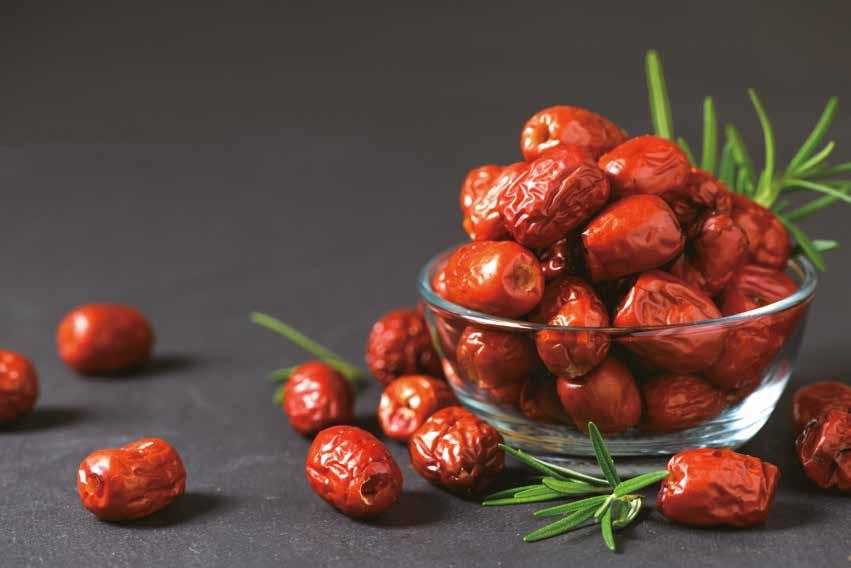

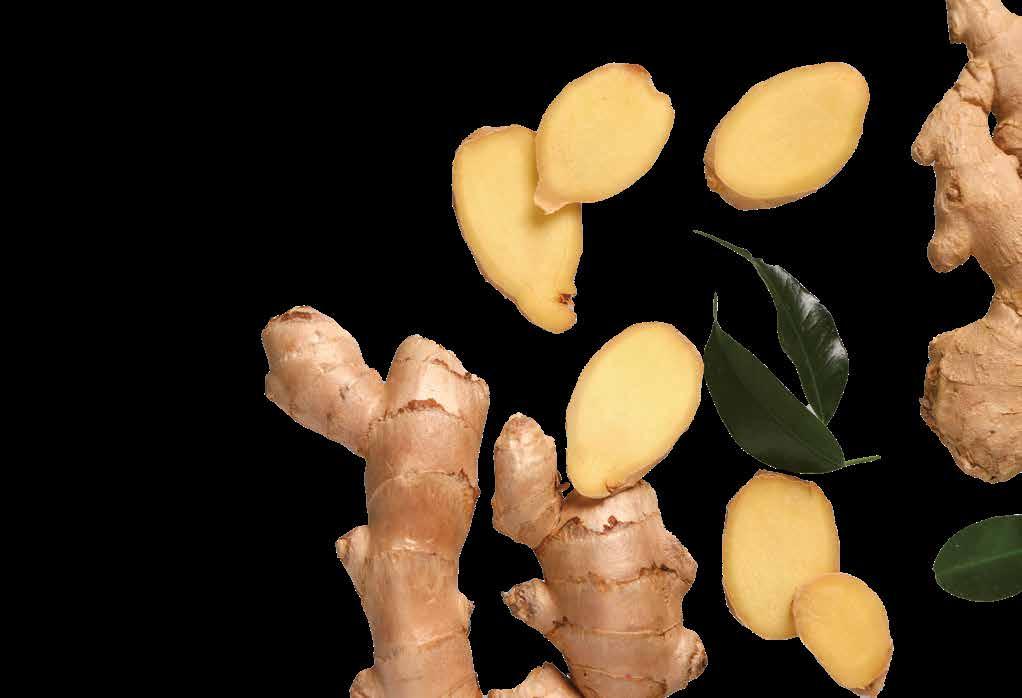
The UK office is located in London, the capital of the United Kingdom, which is the world’s sixth largest economy in terms of gross domestic product and is known for its diverse culinary scene influenced by many different cuisines from around the world. At the UK office, the young overseas pioneers are actively working to diversify the export of Korean agricultural products by capitalizing on the rapidly growing interest in Korean agricultural and food products in the UK market.
Ongoing projects in 2024
Participation in the 2024 UK Speciality & Fine Food Fair (SFFF)
Objective: Support market expansion in the UK through export consultations with buyers and export strategy seminars.
Time: May 22 – May 25, 2024
Location: London, United Kingdom

Objective: Raise awareness and explore buying opportunities by offering premium Korean food experiences to importers, distributors and HoReCa (Hotel, Restaurant, Catering) industry stakeholders at the high-end food exhibition at Olympia London.
Time: September 10 – 11, 2024
Location: Olympia London, Hammersmith Road, Kensington
Scale: A booth at the SFFF venue (4m x 5.5m).
Activity: K-food lunches and online and offline promotional campaigns.
Participating Companies: 10 companies selected for the Frontier Incubator Program (Nokchawon, Sambuja Company, Intake, and more) and 17 local buyers.
Project Details:
- B2B 74 pre-matched and on-site matching sessions and 1:1 export consultation meetings.
- Seminar An export strategy seminar to discuss key issues such as the UK Border Target Operating Model (BTOM) and the Vegan Certification Association’s process and case studies.
- Market Research Insights into local distribution chains, Korean agro-food retail stores, and current food trends in the UK market.
Collaboration with Sports Clubs in Small Towns in the UK to Promote K-Food
Promotion Items:
Beverages and liquors (zero-calorie drinks, floral liquors, traditional alcoholic beverages, etc.), dried fruit chips, chestnuts, etc.
- In collaboration with three companies participating in the Frontier Project: Intake, Geumsan Ginseng Cooperative, and Jayeonteo.
Target Audience: Food distributors and importers, B2B and B2C buyers of beverages and liquors.


Objective: Raise awareness of Korean agricultural and food products and maximize promotional impact by leveraging sports marketing in partnership with a Premier League football club to promote K-Food in small towns in the UK.
Time: September 15, 2024
Location: Molineux Stadium, Wolverhampton, UK
Promotion Strategy: K-food booths and food trucks within the fan zone, stadium screen displays, outdoor advertisements, and media marketing campaigns.
Promotion Items:
Ramyeon, red ginseng products, beverages, snacks, candies, and ready-to-eat meals.
Target Audience: 30,255 spectators on match day and more than 500 club officials and staff.



Qingdao Branch Office
Room 705, Yuanxiongguojiguangchang
Beijing Branch Office 603 Room, Block A, Fairmont Tower No.33 Guangshun North Street, Chaoyang District, Beijing, 100102, China
(100102 中國 北京市 朝阳區 广顺北大街
33号院 1号楼 1单元 6层 603室)
E-Mail: beijingat@at.or.kr
TEL: 86-10-6410-6120~1
070-4617-5090~1, 7377
FAX: 86-10-6410-6122
Shanghai Branch Office Room 3201, New Hongqiao Central Plaza No.83, LouShanGuan Rd., Changning District, Shanghai, 200336, China
(200336 中國 上海市 長寧區 婁山關路 83 號 新虹橋中心大厦 3201室)
E-Mail: shanghaiat@at.or.kr
TEL: 86-21-3256-6325
070-7077-6197, 6199, 6205 FAX: 86-21-3256-6328
Dalian Branch Office
Room 1302, Xiwang Building,NO136 Zhongshan Road,Zhongshan District,Dalian 116001
(大连市中山区中山路136号希望大厦 1302号)
E-Mail: dalianat@at.or.kr TEL: 86-411-3960-3361~3 070-4617-3278
FAX: 86-411-3960-3362
Hongkong Branch Office Room 1003, 10F Jubilee Centre, 18 Fenwick Street, 46 Gloucester Rd, Wanchai, Hong Kong
E-Mail: hkatcenter@at.or.kr
TEL: 852-2588-1614~6 070-4617-2696, 7116 FAX: 852-2588-1919
Building, No.26, Hongkong Middle Road, Qingdao, 266071, China (中國 山東省 靑島市 市南區 香港中路 26 号 远雄国际广场 705户)
E-Mail: qingdao@at.or.kr
TEL: 86-532-5566-8870~3, 5 FAX: 86-532-5566-8873
Qingdao aT logistics Co., Ltd
266108, Qingdao aT logistics Co., Ltd
3 Baishawan Rd., Liuting Street, Chengyang, Qingdao, China (青岛市 城阳区 流亭街道 白沙湾路3号
青岛爱特物流有限公司)
E-Mail: qingdao_logistics@at.or.kr
TEL: 86-532-6696-2229
070-7938-0863~4
FAX: 86-532-6696-2181
Ha Noi Branch Office
#1213, 12th floor., Keangnam Hanoi Landmark 72 Tower, Plot E6, Pham Hung Str., South Tu Liem Dist., Ha Noi., Viet Nam
E-Mail: hanoi@at.or.kr TEL: 84-24-6282-2987
070-4617-7101~2, 7256~7258 FAX: 84-4-6282-2989
Ho Chi Minh Branch Office
CJ Building, Floor 3, 2 Bis 4-6 Le Thanh Ton Street Ben Nghe Ward, District 1, Ho Chi Minh City
E-Mail: atcenterhcmc@at.or.kr
TEL: 84-28-3822-7504
070-4617-3276, 070-8098-6514 FAX: 02-838-227-503
Bangkok Branch Office
#2102 Level 21, Interchange 21, 399 Sukhumvit Road, North Klongtoey, Wattana, Bangkok 10110 Thailand
E-Mail: bangkok@at.or.kr
TEL: 66-2-611-2627
070-4617-7226~7
FAX: 66-2611-2626
Jakarta Branch Office
The Energy Building 20th FL, Zone F, SCBD Lot.11A
JL.Jenderal Sudirman Kav 52-53, Jakarta 12190 Indonesia
E-Mail: jakarta@at.or.kr
TEL: 62-21-2995-9032~3, 9035, 9094
070-4617-2695
FAX: 62-21-2995-9034
Kuala Lumpur Branch Office
Suite 6-04, 6th Floor, Menara Hap Seng, Jalan P. Ramlee, 50250 Kuala Lumpur
E-Mail: atcenterkl@at.or.kr
TEL: 60-3-2706-4299
070-5223-4901, 070-4617-7238
FAX: 60-3-2706-4301
Singapore Branch Office
1 Wallich Street #14-01 Guoco Tower, Singapore 078881
TEL: 65-9855-8277
Tokyo Branch Office
Korea Agro-Trade Center, Tokyo Korea Center 5F, 4-4-10 Yotsuya, Shinjuku-ku, Tokyo, 160-0004, Japan
(東京都新宿区四谷4-4-10 KOREA CENTER5F)
E-Mail: tokyo@at.or.kr TEL: 81-3-5367-6656 070-4617-7061~2, 070-8287-3060 FAX: 81-3-5367-6657
Osaka Branch Office
8F, Nomura Fudousan Osaka Bldg. 1-8-15, Azuchimachi, Chuou-Ku, Osaka, 541-0052, Japan
(大阪市 中央區 安土町 1-8-15, 野村不動 産大阪B/D 8F)
E-Mail: osaka@at.or.kr
TEL: 81-6-6260-7661
070-7000-4138 FAX: 81-6-6260-7663
Dubai Branch Office
57528 Office #48, Sunset Mall, Jumeirah Beach Rd, Jumeira 3, Dubai, UAE
E-Mail: dubai@at.or.kr
TEL: 971-4-339-2213 FAX: 971-4-456-1155
New York Branch Office
15 East 40th Street Suite 701 New york NY 10016, USA
E-Mail: newyork@at.or.kr
TEL: 1-212-889-2561
FAX: 1-212-889-2560
Los Angeles Branch Office
12750 Center Court Drive South, #255, Cerritos, CA 90703, USA
E-Mail: losangeles@at.or.kr TEL: 1-562-809-8810
FAX: 1-562-809-1191
São Paulo Branch Office
Av Paulista 1636, 10andar, #1008 –
São Paulo CEP 01310-000
E-Mail: saopaulo@at.or.kr TEL: 55-11-3283-0089, 55-11-3286-0059
Paris Branch Office
Korea Agro-Trade Center, 89 Rue du Gouverneur Général Eboué (1er etage), 92130, Issy-les-moulineaux, France
E-Mail: paris@at.or.kr
TEL: 33-1-4108-6076~8, 6095~6 FAX: 33-1-4108-2016
Moscow Branch Office
123610, Moscow, Krasnopresnenskaya naberezhnaya 12, 6th floor, 608 office
E-Mail: atmoscow@at.or.kr TEL: 7-924-007-1528 070-4617-3277
